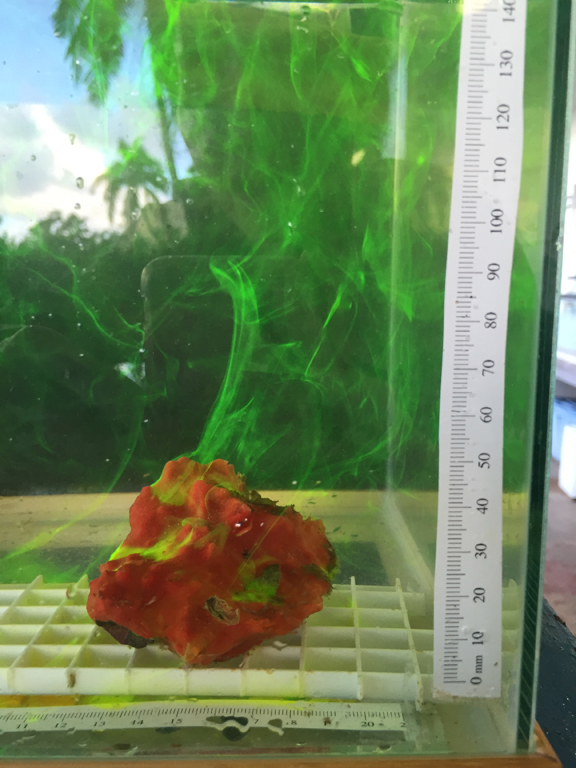The role of sponges in nitrogen cycling in Kāne‘ohe Bay, O‘ahu
PRINCIPAL INVESTIGATOR: Brian Popp
Graduate Fellow: Joy Shih

Coastal ecosystems are regions of remarkable biological productivity and diversity, yet they are among our most disturbed natural environments. Although many human activities cause change in the coastal zone, they occur against a background of natural change. Effective coastal-zone management requires that we identify and understand these separate causes of ecosystem change. This requires an understanding of the chemical processes that sustain the natural resources of tropical and subtropical ecosystems. In this study, we focus on marine sponges because they strongly effect nitrogen (N) cycling in coastal environments through pumping and filtering tremendous volumes of water, while their hosted microorganisms affect a wide range of ecologically important N transformations. We will measure sponge respiration, water pumping rates, and chemical reactions to quantify sponge impacts on coastal N cycles. These include nitrification (i.e., the conversion of ammonia to nitrogen oxides), organic N uptake and degradation, and potentially denitrification (i.e., conversion of nitrogen oxides to N2 gas). Thus, marine sponges may be adding or subtracting crucial N fertilizers from coastal systems. Previous work has identified high rates of N chemical transformations within Caribbean sponge communities, but little is known about the role of sponges in Hawaiian coastal ecosystems. The data we collect during this project will allow us to measure the net chemical flux for several sponge species to determine the impacts sponges have on coastal N cycles.
Watch a podcast on this project here.

